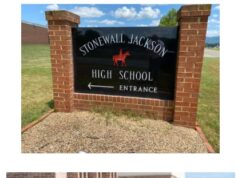The Virginia 10th CD Democratic Committee appears to be doing its job as it should, considering various methods of nomination for the large field of Democrats vying to take on Rep. Barbara Comstock (R) next year. And that’s no matter what ridiculous hit pieces in Politico (see demolition of that story here) have to say. Or what an over-the-top, false, poorly written email by one of the VA-10 Democratic candidates, Lindsey Davis Stover, had to say.
For instance, Stover’s email claims, “There is a loophole that would allow the members of the Virginia Democratic Party Committee to choose our nominee through a caucus with limited voter participation and forego a primary election where every
voter has a voice.” First of all, it’s not a “loophole,” it’s a fundamental part of what committees do. Second, it’s not “the Virginia Democratic Party Committee,” it’s the Virginia 10th CD Democratic Committee. Third, while I prefer the higher turnout of primaries, I also like having Democratic nominees selected by a majority of Democratic primary voters, and that is unlikely to be the case in VA-10, given the fact that there are several well-funded, serious candidates running (meaning that the winner could end up with just 30% or whatever).
Unfortunately, Virginia does not allow use of ranked or “range” or “instant runoff” voting in primaries. Nor does Virginia have voter registration by party, which means that Republicans can vote in Democratic primaries. So let’s not pretend that one nominating method is perfect and the others are all evil or something. That’s just absurd. Personally, I’d love it if the 10th CD Democratic Committee could opt for a primary using ranked/range/IRV, but unfortunately it can’t. The more I think about it, the more I lean towards a regular primary over a “firehouse primary,” but not because I think a regular primary is a perfect or pure method by any means, simply because I find it difficult to see how a series of “firehouse primaries” would work in such a large, sprawling, and in many cases rural district.
With that, here are two posts I think are well worth sharing. The first is from VA 10th CD Democratic Chair Zach Pruckowski, who is – from everything I’ve seen – a straight shooter and hard worker doing the job he’s supposed to be doing — holding a transparent, public discussion about the pros and cons of possible nomination methods for the large field of 10th CD Democratic candidates (a good problem to have, by the way; in the past, there was little if any competition for this nomination, as it was seen as a long-shot for Democrats at best).
Democratic Friends,
There’s been a lot of discussion and controversy about our most recent meeting, so we’d like to take the opportunity set the record straight about our most recent meeting, and about where discussions of the nominating process stand.
The Virginia Democrats’ State Party Plan instructs the 10th CD Committee to pick the nominating method for the Congressional race and gives us 4 options to pick from – a Convention, an Assembled Caucus (Mass Meeting), an Unassembled Caucus (Firehouse Primary), or a State-Run Primary. All of these methods have been used for different races in the 10th CD over the last few years, and there is no “default” choice – every time there’s a nomination, some committee somewhere discusses which method to use, and votes.
In the past, these discussions haven’t been fully transparent to our activists, volunteers, and voters in the Democratic community, and that’s something we’d like to change. Because we believe in leading by example, we held a 45 minute discussion at our public meeting on Saturday where we debated the pros and cons of each method. Then we decided to go back to our local Democratic communities and talk to our fellow activists before voting at our November meeting (which again, will be open to the public). We also wanted to do more research, because that public discussion raised questions we don’t have immediate answers for. We’re currently only 6 days into that two month process.
There’ve been some claims that the race in the past has been a primary and we’re taking that away. The last three or four cycles have in fact been conventions, and none of them were contested.
We’re going to have a lot more info for you on the pros and cons of each method over the coming weeks. We’re all volunteer leaders who’re also working hard to elect our 2017 candidates, so we ask for your patience if it takes us some time to do the research and writeups and pass it along to you – we’re doing our best to be transparent and frank with you, our friends and fellow Democrats.
This committee isn’t made up of “party elites”, we’re all volunteers and activists. We all make phone calls and knock on doors and show up at protests. We go to the same local committee and group meetings you do. If you’re an active Dem volunteer in VA-10, you’ve probably met at least one of us. Feel free to talk to us there and give us your thoughts.
Respectfully,
Zach Pruckowski,
Chair, 10th CD Democratic Committee
Now, here’s a post by the 10th CD Democratic Committee, explaining the various nomination methods, as well as some of the major pros and cons of each. Nice job, again, by Zach Pruckowski – keep up the good work!
“Nominating Process Selection” is generally not a hot topic of conversation, and frequently these sorts of things aren’t heavily discussed or publicized. The goal of the committee in doing this publicly and having such a long public commentary period is to shed some light on these sorts of processes because the 4 options for nominating method are the same across the state for Democrats. The choice we make for the Congressional race is the same choice your local committee will have to make for City Council in 2018 or County Supervisor in 2019.
Virginia law gives the Democratic Party the ability to determine the nominating process for partisan races. Essentially, the Democratic Party has a “ballot line” and can determine who gets it. The Democratic Party of Virginia (DPVA) has a governing document called the “State Party Plan” (SPP), and one of the big things the SPP does is outline which committees are in charge of which nominations and how they can determine those nominations. This is a publicly available document on the DPVA website, but it’s a 40-page legal document. The long and short of it is that CD committees pick the nominating process for Congressional races, and your local city/county committee picks the nominating process for races like Supervisor, City Council, or Treasurer. State Legislature is a bit more complicated, so we’ll talk about that a bit closer to 2019.
The State Party Plan also gives four options for the committee to pick. Those four options are the State-run Primary, Convention, Assembled Caucus, and Unassembled Caucus. An Assembled Caucus is sometimes called a “Mass Meeting”, and an Unassembled Caucus is sometimes called a “Firehouse Primary”. In this post we’ll quickly run through a description of each type:
=====================================================
The Primary is the simplest to explain – we notify the State Board of Elections that we’d like them to run a primary for us, and they handle the rest. The filing requirements and deadlines are set by the state, and the primary is run by the usual election officers at your precinct on the second Tuesday in June. It’s straightforward and accessible (two really big PROs), but also relatively inflexible. The filing requirements and plurality voting method are set in stone, as is the timetable – candidates MUST file by the end of March, and the nomination isn’t decided until mid-June. A common question is “can we do a state-run primary, except with a runoff/earlier than June/with a later filing deadline?” and the answer, unfortunately, is no.
The Firehouse Primary is also fairly simple to explain and similar to a state-run Primary – there are voting sites, run by Party volunteers (ideally election officers moonlighting), and the voters go, sign in, and cast a paper ballot. Then the Party volunteers (overseen by campaign observers from each side) count up the ballots and a winner is declared. Because this process is party-run, there’s a lot more flexibility – the process can be held as early as the last weekend of April, filing requirements or deadlines can be adjusted to suit the specific circumstances, and alternative voting systems like Instant Runoff can be used. The downside is that because it’s party-run, it’s smaller-scale. There are generally fewer voting sites (maybe one per 10-12 precincts) and they’re open for 3-8 hours on a Saturday instead of 13 hours on a Tuesday. It’s also harder to absentee vote – while the Party often tries to have a few in-person absentee opportunities, you can’t easily match the longer time frame (and mail-in opportunities) that the state-run elections offer. We’ve used Firehouse Primaries before in situations like State Senate special elections or County Supervisor races, and in those situations, we got solid participation but it took a lot of logistical effort.
The Assembled Caucus/Mass Meeting is basically what it says on the tin – a large meeting is held, which any Democrat in the district can attend. You sign in, sit down, and then at that meeting, you’ll hear from each candidate and cast your ballot. As with the Firehouse Primary, there’s a lot of flexibility in terms of deadlines, requirements, voting method, etc. The downside is that participating in a Mass Meeting means driving to the meeting location and staying there until it’s done (which could take from 30 minutes to a couple hours). For a race for city Sheriff where everyone’s local, that’s one thing, but for a Congressional race in a district that stretches from McLean to Stephens City, that’s a much larger ask.
The fourth option is a Convention. The Convention process is fairly complex and often misunderstood. For a convention, each locality has a certain number of delegate slots, and the folks elected to these delegate slots meet at the Convention to decide the question. Individual Democrats sign up to be delegates for their locality, and if there are more signups than there are allocated slots, then a caucus is held. Theoretically, this could be an Assembled Caucus (Mass Meeting) but more likely it’d be an Unassembled Caucus (Firehouse Primary). Then Democratic voters come in and vote for the *delegates* they want to win. When an issue is lightly contested (for instance, who gets to go to the national convention), local caucuses are often unnecessary. But for a heavily contested question (like a nine-way Congressional race) it’s reasonable to assume every locality will be holding a caucus. You end up with similar logistical concerns to a “Firehouse Primary” as well as the participation concerns.
=====================================================
Our hope is to do more of these explanatory posts, especially as we debate and weigh the various nominating methods. Please feel free to weigh in either here or with your local 10th CD members about what sort of factors are important to you in this decision-making process, and definitely please ask questions if there’s something you want to know about any of the options or our process for deciding.



![Video: Former Eastern District of VA Federal Prosecutor Gene Rossi Asks, “Is Donald Trump going to be the lead counsel in that prosecution [of Jim Comey] and do the opening, closing and rebuttal? I pray that he does!”](https://bluevirginia.us/wp-content/uploads/2025/09/rossiedva-238x178.jpg)









